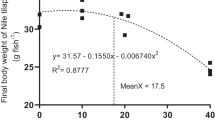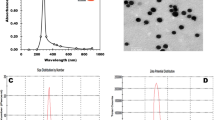Abstract
Wumeng semi-fine wool sheep are affected by a disease, characterized by emaciation, stiffness and trembling of the limbs, weakness and inability to stand, and sudden death. The objective of the study was to determine possible relationships between the disease and mineral deficiencies. Samples of wool, blood, and liver were collected from affected and healthy sheep. Samples of soil and forage were collected from affected and unaffected areas. The samples were used for hematological and biochemical analyses and mineral nutrient measurements. Results showed that selenium concentrations in forage and soil samples from affected areas were significantly lower than those from unaffected areas (P < 0.01). Meanwhile, selenium concentrations of wool, blood, and liver from the affected sheep were also significantly lower than those from the healthy sheep (P < 0.01). The mean concentration of hemoglobin (Hb), packed cell volume (PCV), and mean corpuscular hemoglobin (MCH) from the affected sheep were significantly lower than those from the healthy sheep (P < 0.01). Serum glutathione peroxidase (GSH-Px), superoxide dismutase (SOD), and catalase (CAT) activity in the affected sheep were significantly lower than those in the healthy sheep (P < 0.01). Serum creatine phosphokinase (CPK), lactate dehydrogenase (LDH), glutamate pyruvate transaminase (GPT), glutamic oxaloacetic transaminase (GOT), alkaline phosphatase (ALP), and malondialdehyde (MDA) values in the affected sheep were significantly higher than those in the healthy sheep (P < 0.01). Serum concentrations of free triiodothyronine (FT3) and triiodothyronine (TT3) in the affected sheep were significantly lower than those in the healthy sheep; serum concentrations of free tetraiodothyronine (FT4) and tetraiodothyronine (TT4) in the affected sheep were significantly higher than those in the healthy sheep (P < 0.01). But the administration of selenium and vitamin E by hypodermic injection prevented and cured the disease. The injection contains 0.1% and 5% of sodium selenite and vitamin E, respectively. A single dose is 6, 6, and 2 mL for mature ewe, mature ram, and lamb, respectively, repeated only once 15 days later. This study demonstrated that the disorder of Wumeng semi-fine wool sheep was mainly caused by the selenium deficiency in soil and forage.
Similar content being viewed by others
References
Davis AJ, Myburgh JG (2016) Investigation of stillbirths, perinatal mortality and weakness in beef calves with low-selenium whole blood concentrations. J S Afr Vet Assoc 87(1):1–6
Halilova H (2012) The biogeochemical properties of selenium and its effect on buffalo offspring. J Anim Vet Adv 9(11):1681–1683
Bickhardt K, Ganter M, Sallmann P, Fuhrmann H (1999) Investigations on manifestations of vitamin E and selenium deficiency in sheep and goats. Deut Tierarztl Woch 106(6):242
Allen JG, Steele P, Masters HG, Dantuono MF (2010) A study of nutritional myopathy in weaner sheep. Aust Vet J 63(1):8–13
Ghaderzadeh S, Mirzaei AGF, Nikbin S (2016) Review on properties of selenium in animal nutrition. Iran J Appl Anim Sci 6(4):753–761
Muegge CR, Brennan KM, Schoonmaker JP (2016) Supplementation of organic and inorganic selenium to late gestation and early lactation beef cows effect on cow and preweaning calf performance. J Anim Sci 94(8):3399–3408
Rotruck JT, Pope AL, Ganther HE, Swanson AB, Hafeman DG, Hoekstra WG (2010) Selenium: biochemical role as a component of glutathione peroxidase. Science 38(8):280–283
Li Q, Zhao ZJ, Yang PZ, Xu XQ, Liu YF, Yu HZ, Ma X, Du R, Zhu L (2016) The prevention effect of selenium on prevalence of children kaschin-beck disease in active endemic areas in Qinghai plateau. Biol Trace Elem Res 169(1):17–21
Hefnawy AEG, Tórtora PJL (2010) The importance of selenium and the effects of its deficiency in animal health. Small Rumin Res 89(2–3):185–192
Wen H, Zheng X, Quimby FR, Roneker CA, Lei XG (2003) Low levels of glutathione peroxidase 1 activity in selenium-deficient mouse liver affect c-Jun N-terminal kinase activation and p53 phosphorylation on Ser-15 in pro-oxidant-induced aponecrosis. Biochem J 370(3):927–934
Shen XY, Li X, Zhang RD (2010) Studies of “unsteady gait disease” of the Tibetan gazelle (Procapra picticaudata). J Wildl Dis 46(2):560–563
Yuan R, Li L, Wang Q, Du G (2011) Copper deficiency in Guizhou semi-fine wool sheep on pasture in south west China karst mountain area. Afr J Biotechnol 10(74):17043–17048
Shen XY (2011) Studies on wool-eating ailment in Guizhou semi-fine wool sheep. Agric Sci China 10(10):1618–1623
Shen XY, Zhang J, Zhang RD (2014) Phosphorus metabolic disorder of Guizhou semi-fine wool sheep. PLoS One 9(2):e89472
Chen F, Gao J, Wu D, Xu L, Han W, Zhang D, Bi X, He M, Pan Y (2017) Clinical and pathologic features of a suspected selenium deficiency in captive plains zebras. Biol Trace Elem Res 176(1):114–119
Shen XY, Huo B, Min XY, Wu T, Liao JJ (2018) Assessment of mineral nutrition of forage in the natural habitat of Przewalski’s gazelle (Procapra przewalskii). Acta Pratacul Sin 27(3):108–115
Caple IW, Edwards SJA, Forsyth WM, Whiteley P, Selth RH, Fulton LJ (1978) Blood glutathion peroxidase activity in horses in relation to muscular distrophy and selenium nutrition. Aust Vet J 54(2):57–60
Streeter RM, Divers TJ, Mittel L, Korn AE, Wakshlag JJ (2012) Selenium deficiency associations with gender, breed, serum vitamin E and creatine kinase, clinical signs and diagnoses in horses of different age groups: a retrospective examination 1996–2011. Equine Vet J 44(S43):31–35
Corbera JA, Morales M, Pulido M, Gutierrez C (2003) An outbreak of nutritional muscular dystrophy in dromedary camels. J Appl Anim Res 23(1):117–122
Grace ND, Knowles SO (2002) A reference curve using blood selenium concentration to diagnose selenium deficiency and predict growth responses in lambs. N Z Vet J 50(4):163–165
Shen XY, Pei YL, Zhou C, Gongbao CR, Guo MK (2002) Effect of germanium and seleniun on the function of antioxidant system in dairy yaks living in Qinghai-tibetan plateau. J Gansu Agric Univ 37(4):437–441
Moir DC, Masters HG (2010) Hepatosis dietetica, nutritional myopathy, mulberry heart disease and associated hepatic selenium levels in pigs. Aust Vet J 55(8):360–364
Arthington JD, Rechcigl JE, Yost GP, Mcdowell LR, Fanning MD (2002) Effect of ammonium sulfate fertilization on bahiagrass quality and copper metabolism in grazing beef cattle. J Anim Sci 80(10):2507–2512
Tiffany ME, Mcdowell LR, Oconnor GA, Martin FG, Wilkinson NS, Percival SS, Rabiansky PA (2002) Effects of residual and reapplied biosolids on performance and mineral status of grazing beef steers. J Anim Sci 80:260–266
Field AC, Williams JA, Dingwall RA (1985) The effect of dietary intake of calcium and dry matter on the absorption and excretion of calcium and phosphorus by growing lambs. J Agric Sci 105:237–243
Karn JF (2001) Phosphorus nutrition of grazing cattle: a review. Anim Feed Sci Technol 89:133–153
Suttle NF (2009) Mineral nutrition of livestock. Cabi Bookshop 215(6):1–8
Dove H, Masters DG, Thompson AN (2016) New perspectives on the mineral nutrition of livestock grazing cereal and canola crops. Anim Prod Sci 56(8):1350–1360
Pilarczyk B, Drozd R, Pilarczyk R, Tomza MA, Jankowiak D, Hendzel D, Kuba J, Kowalska J (2011) Glutathione peroxidase (GSHPx) activity in the liver of red deer in relation to hepatic selenium concentrations, sex, body weight and season of the year. Biol Trace Elem Res 144(1–3):560–569
Thompson KG, Fraser AJ, Harrop BM, Kirk JA (1980) Glutathione peroxidase activity in bovine serum and erythrocytes in relation to selenium concentrations of blood, serum and liver. Res Vet Sci 28(3):321–324
Shen XY, Ning XK, Li WX, Zhang M (2014) Studies on serum biochemical values and mineral contents of tissues in Qianbei-pockmarked goats. J Anim Vet Adv 13(8):503–505
Shen XY, Kuan CY, Ning XK, Wang HC, Zhang JH (2013) Serum biochemical values and mineral contents of tissues in Guizhou semi-fine wool sheep. J Anim Vet Adv 12(11):1078–1080
Lei X, Deng W, Fei CL (2016) Measurement of blood cell and blood biochemical in selenium-deficiency zebras. Sichuan J Zool 35(01):113–116
Żarczyńska K, Baumgartner W, Sobiech P (2017) Coagulology, biochemical profile and muscle pathology in calves diagnosed with nutritional muscular dystrophy. Pol J Vet Sci 20(2):387–394
Dhingra S, Singh U, Bansal MP (2003) Protective role of selenium status on T3/T4 kinetics in rats under hyperlipidemia. Indian J Biochem Biophys 40(4):260–264
Larsen PR, Zavacki AM (2012) Role of the iodothyronine deiodinases in the physiology and pathophysiology of thyroid hormone action. Eur Thyroid J 1(4):232–242
Contreras P, Wittwer F, Matamoros R, Mayorga IM, Schaik GV (2005) Effect of grazing pasture with a low selenium content on the concentrations of triiodothyronine and thyroxine in serum, and GSH-Px activity in erythrocytes in cows in Chile. N Z Vet J 53(1):77–80
Lin S, Wang C, Tan S, Liang Y, Yao HD, Zhang ZW, Xu SW (2014) Selenium deficiency inhibits the conversion of thyroidal thyroxine (T4) to triiodothyronine (T3) in chicken thyroids. Biol Trace Elem Res 161(3):263–271
Rowntree JE, Hill GM, Hawkins DR, Link JE, Rincker MJ, Bednar GW, Kreft RA (2004) Effect of Se on selenoprotein activity and thyroid hormone metabolism in beef and dairy cows and calves. J Anim Sci 82(10):2995–3005
Arthur JR, Morrice PC, Beckett GJ (1988) Thyroid hormone concentrations in selenium deficient and selenium sufficient cattle. Res Vet Sci 45(1):122–123
Süleyman K (2007) Serum T3 and T4 concentrations in lambs with nutritional myodegeneration. J Vet Intern Med 21(5):3–5
Jovanovi I, Olivera P, Gvozdi D, Stoji V (2004) Selenium and iodine status relationship in calves and heifers from selenium and iodine deficient areas in Serbia. Acta Veterinaria 54(1):3–11
Khalil B, Khodadad M, Pourjafar M, Mohsen G, Ebadolah M (2011) Serum thyroid hormones and trace element concentrations in crossbred holstein cattle naturally infected with Theileria annulata. Comp Clin Pathol 20(2):115–120
Funding
This work was supported by the Project of National Key Research and Development Program of China in 13th Five-year Plan (2016YFC0502601), the National Natural Science Foundation of China (41671041), and the Research Fund for the Doctoral Program of Southwest University of Science and Technology (17zx7146).
Author information
Authors and Affiliations
Corresponding author
Ethics declarations
Conflict of Interest
The authors declare that they have no conflict of interest.
Ethics Statement
The Wumeng semi-fine wool sheep used in these studies were cared as per outlined in the Guide for the Care and Use of Animals in Agricultural Research and Teaching Consortium (Federation of Animals Science Societies, 2010). Sample collections in animals were approved by Southwest University of Science and Technology in China, Institutional Animal Care and Use Committee (Project A00556).
Additional information
Publisher’s Note
Springer Nature remains neutral with regard to jurisdictional claims in published maps and institutional affiliations.
Rights and permissions
About this article
Cite this article
Huo, B., Wu, T., Song, C. et al. Studies of Selenium Deficiency in the Wumeng Semi-Fine Wool Sheep. Biol Trace Elem Res 194, 152–158 (2020). https://doi.org/10.1007/s12011-019-01751-1
Received:
Accepted:
Published:
Issue Date:
DOI: https://doi.org/10.1007/s12011-019-01751-1




